…and so is that smell!
Ah, February—the season of love!
Chocolates, roses, romantic dinners… and the unmistakable scent of striped skunk? 👃
That’s right! If you’ve noticed more of that distinctive perfume lingering in the air lately, you’re not imagining things. Skunks are on the move, and love is the reason why. Well, okay, mating is the reason why. But we’re pretty sure Pepé Le Pew would argue that skunks are quite capable of love, thank you very much. 🦨
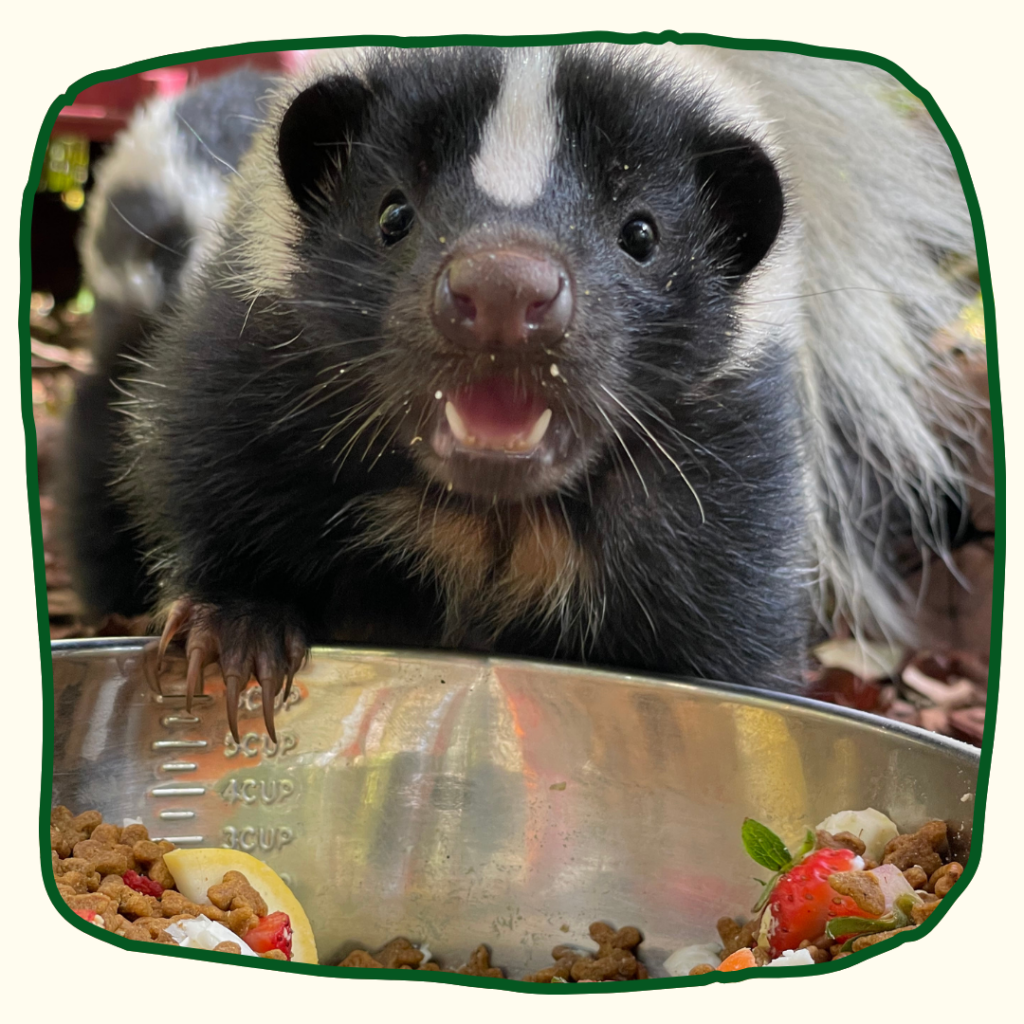
February marks the start of the striped skunk’s scent-sational mating season. After a winter spent hunkering down in dens and foraging for whatever they can find, these black-and-white furballs are now starting to venture out in search of romance. They’re probably a little rusty, too. 😅 Adult skunks are typically quite solitary outside of mating season (Jan-Mar), so those first date jitters must be extra strong for these critters right now.
Skunks quite literally leave their comfort zones to look for love. 💕 A skunk’s typical home range is about 0.5-2 miles in diameter, but once late January rolls around, male skunks (bucks) begin wandering far and wide in pursuit of receptive females (does). In fact, bucks can travel up to 5 miles in a single night in search of the right mate! And, since skunks are polygynous—meaning one male will mate with multiple females—these stinky males can be particularly busy this time of year.
With all this movement comes a higher chance of crossing paths with cars, predators…or uninterested females. While skunks use their famously pungent spray as a last resort against threats, female skunks will also deploy it when rejecting an overly persistent suitor. Nothing says “not interested” quite like a face full of sulfuric musk. 💨
All of this is to say: please drive carefully this season! 🚗 Skunks are crossing roads to new territories or may be attracted to litter and carrion on the road. We sure hope we don’t have to tell you not to litter, but remember: no litter is safe litter.
Keep your eyes peeled after dark and help these stinky, charming neighbors find their one true love…or their many true loves, for those ambitious bucks. 😉
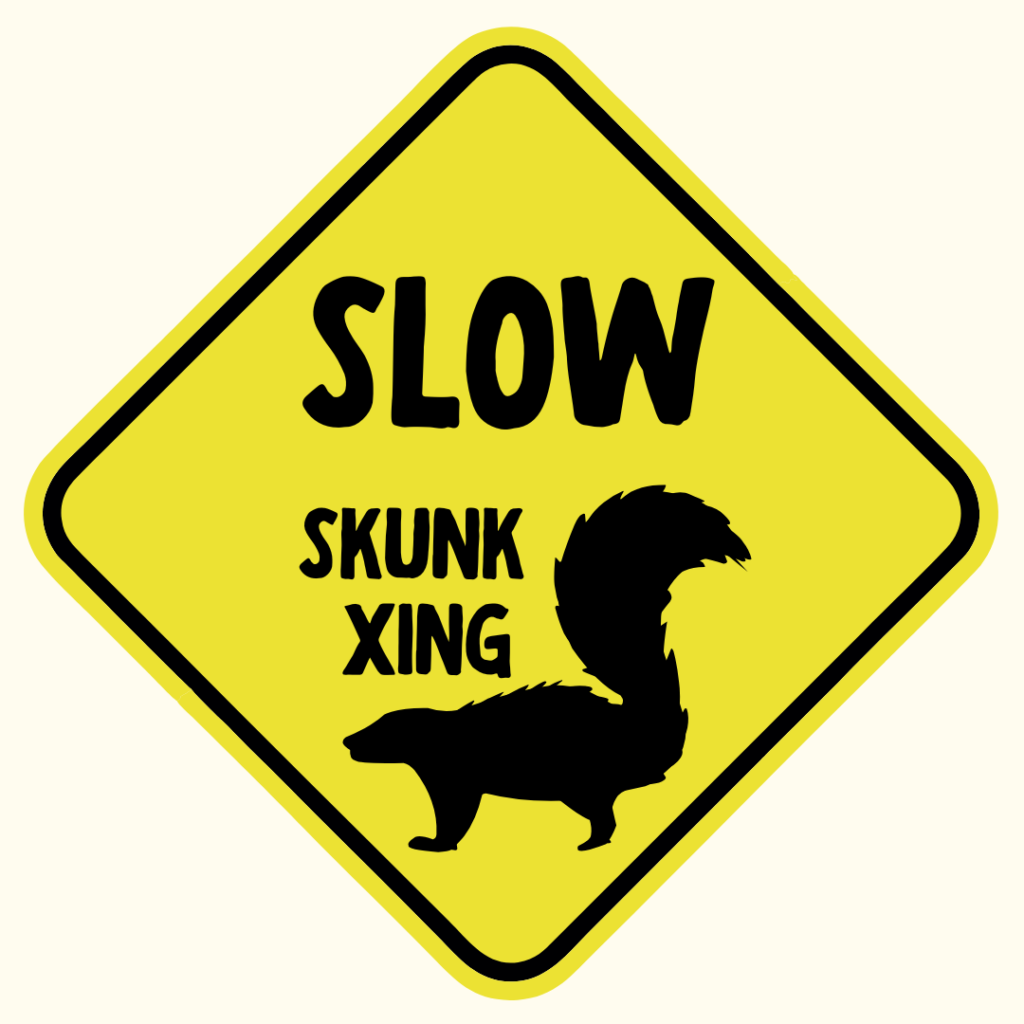
For the lucky skunks who do find a match, the love story is a short one—by choice. After mating, the females spend the next couple of months preparing to welcome their little bundles of stench joy. A skunk’s gestation period is about 60-70 days on average. The happy mom-to-be spends that time prepping her den and foraging for protein rich-foods, all by herself. As for the males? They left right after mating, never to return to help the female care for their offspring…though he might show up at her den again next mating season. 🤣
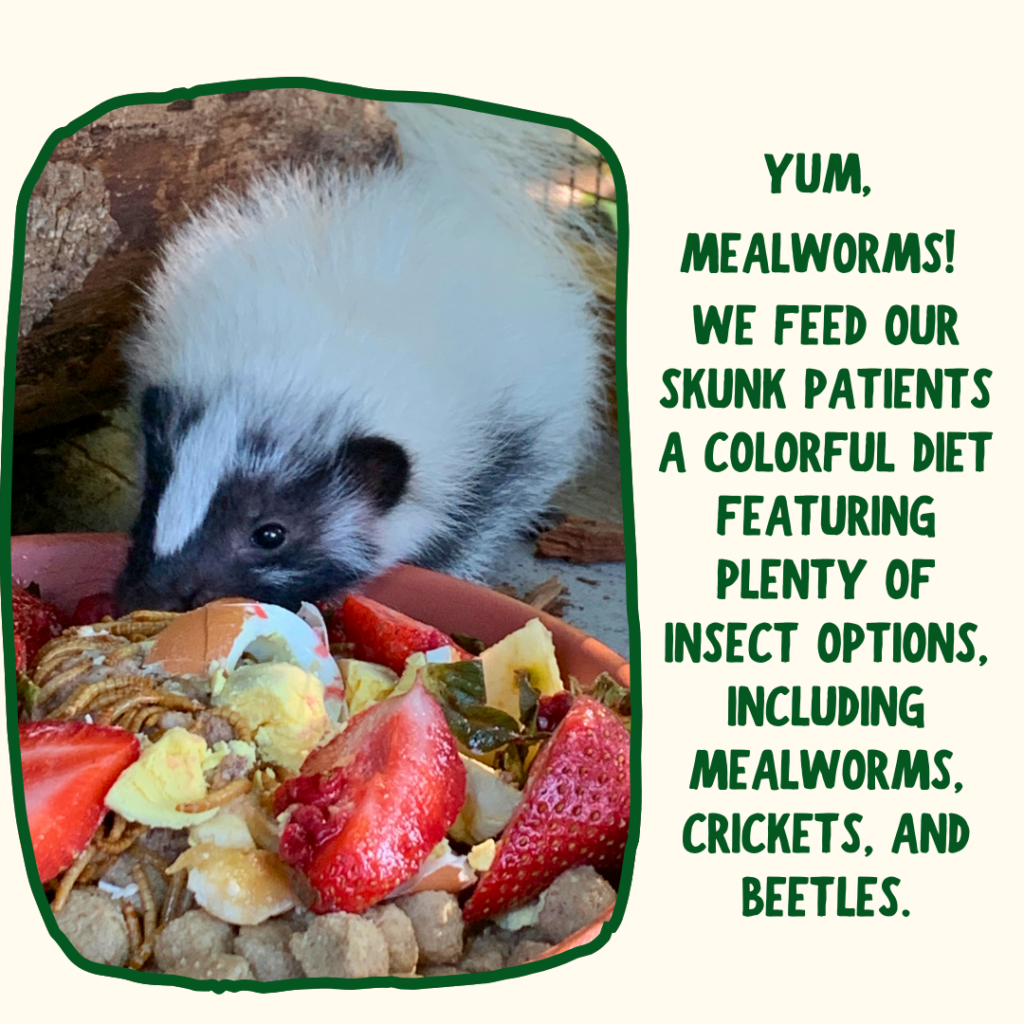
By late April or May, those babies arrive! 👶 Females give birth to a litter of 4-7 baby skunks, called kits, inside of her maternity den. These kits are altricial, meaning they are born helpless and hairless with their eyes closed and ears sealed. The does are devoted mothers, raising and protecting their kits in their dens until they’re big enough to start following her on nighttime foraging adventures. The kits will typically stick with their mother for five to six months before wandering off to establish their own territories.
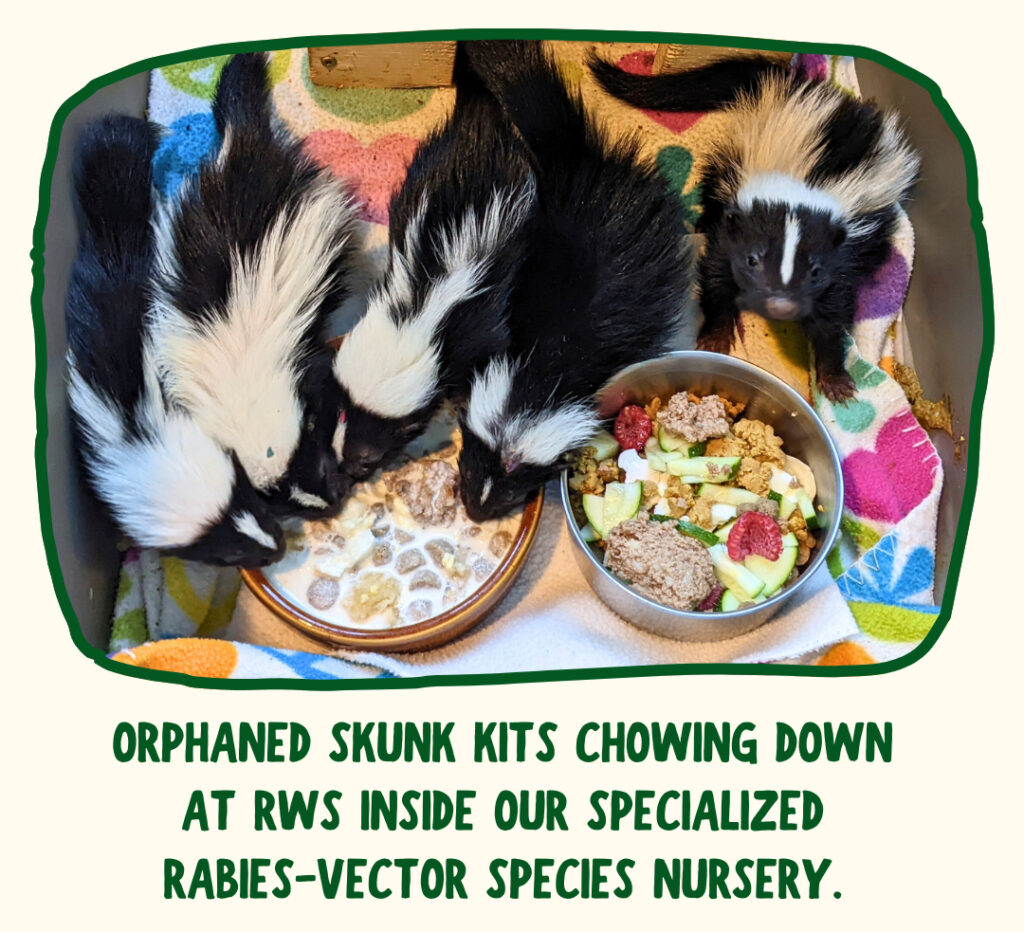
Sadly, the skunk’s season of love can result in heartbreak—and that’s where we often come into the picture as licensed rehabilitators. Nearly all of the 20-30 striped skunk kits we care for each year at the Sanctuary are orphans who lost their mothers to car collisions, inhumane traps, or bullets. 💔
We take great pride in being one of the few rehabilitation organizations in Virginia that works with orphaned skunks. After all, these critters are incredibly beneficial to our ecosystems. Skunks keep plant, insect, rodent, and other small animal populations in check while improving soil quality through digging and dispersing native seeds. We’re so happy to be able to help injured and orphaned skunks get back to the wild so they can play these vital roles. Check out an especially memorable skunk release!
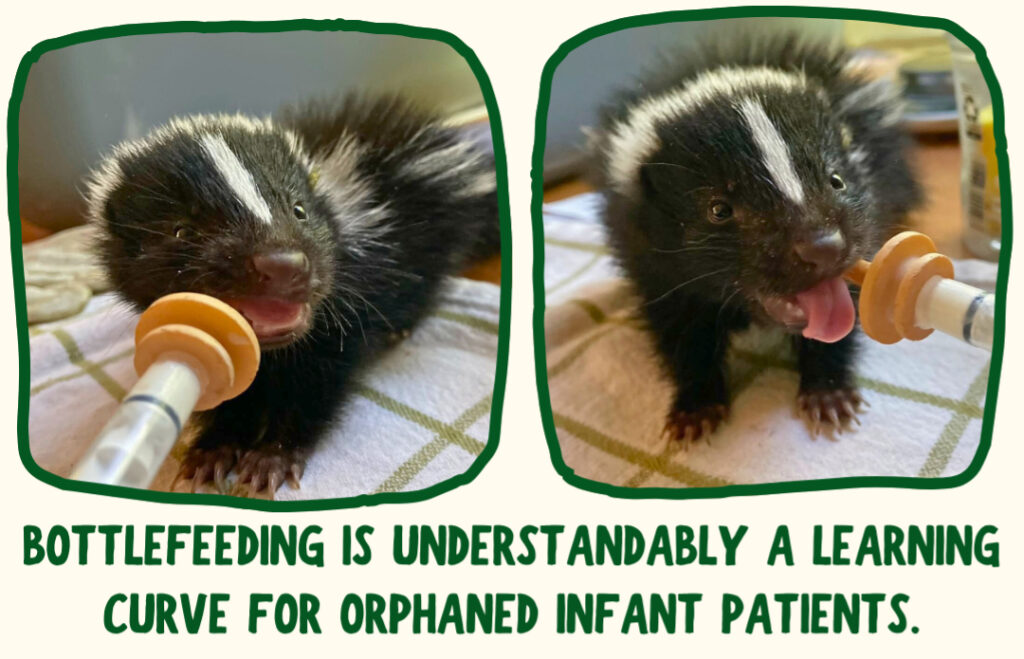
For now, though, you might notice more road crossings or backyard encounters as skunk mating season continues. If you see a striped skunk waddling through your yard, simply give them plenty of room and they’ll continue on their merry way—no stinky altercations necessary. Don’t want them in your yard, but appreciate their incredible value to our wild world? Keep these tips in mind to promote safe distance and coexistence this season:
- Check for potential den sites ahead of baby season (now!) and seal up entrances under porches, crawl spaces, or sheds. Remove brush piles from your yard to further eliminate tempting napping spots.
- Employ safe but mild deterrents like light or noise if you notice sudden, unwanted skunk activity in your yard. We once had a caller play a Justin Bieber CD near a skunk that decided to den right below his bedroom window one night. That skunk promptly moved along and picked a new home. 😆
- Recognize skunk behavior! Skunks give plenty of warning before spraying and can only spray so much, so they’d prefer not to have to waste any spray on you. Skunks stomp their front feet and stand tall on all fours to let you know that you’re too close. Take that as your sign to back up and let your wild neighbor continue on.

So if you catch a whiff of something strong in the air this Valentine’s Day, remember that it’s not just love in bloom. It’s a striped skunk on the move! 🦨💕
February 15, 2025
Published:
Be the first to comment!